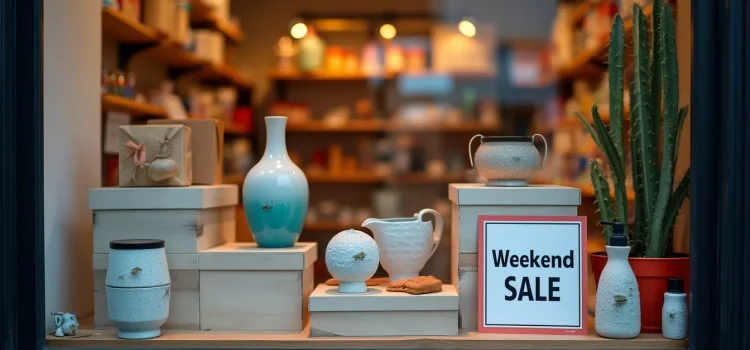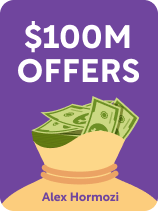

This article is an excerpt from the Shortform book guide to "$100M Offers" by Alex Hormozi. Shortform has the world's best summaries and analyses of books you should be reading.
Like this article? Sign up for a free trial here.
What makes customers more likely to buy a product? How can you create an irresistible offer that drives sales?
Creating an appealing product requires more than just having something valuable to sell. Alex Hormozi shares proven psychological strategies to make offers more compelling, from leveraging scarcity to crafting the perfect name.
Read on to discover four powerful ways to transform your sales approach and help you create offers customers can’t resist.
Offering an Appealing Product
To offer an appealing product, Hormozi says you must leverage a few psychological tools that make it harder for customers to turn your offer down. These include creating a sense of scarcity and urgency, using bonuses to increase the product value, offering guarantees to lower the buyer’s risk, and choosing compelling product names.
Strategy 1: Increase Demand Through Scarcity
The first tactic to increase an offer’s attractiveness is creating a sense of scarcity by limiting the quantity of your product and by limiting the timeframe when people can buy it. Hormozi writes that scarcity plays on our natural inclination to value what seems rare or exclusive and can ramp up both demand and the perceived value of your product, meaning people will pay a higher price for it.
Limited Quantity & Limited Time Frame Promotions
Hormozi describes the following ways to create scarcity around the quantity of product:
- Offer a limited number of products or bonuses.
- Announce one-time-only sale.
- Set a cap on customer numbers, potentially with a waiting list.
- Be open about how much of your product is left (for example, by writing “75% sold out” on your website).
Publicly sharing how close you are to reaching capacity or how close you are to selling out can enhance trust in your offer, as it confirms that others have already decided to purchase it. It’s a form of social proof that implies a collective endorsement of your product’s value. Similarly, let people know when you’ve sold out. Hormozi explains that this not only gratifies those who made a purchase (they’ll be relieved they didn’t miss out) but also creates a sense of urgency among potential customers for future offers. Knowing they missed out once, they’ll be more inclined to act quickly next time to avoid the same mistake.
Similarly, restricting the timeframe in which people can make a purchase also nudges customers to act swiftly. One way to encourage urgency is through strategic promotions tied to a season or another short period. Even if discounts are a regular occurrence, framing them as limited-time offers can lead to a surge in sales. For example, you might offer a “New Moon Sale” for one day only, every month.
The Exploding Offer Strategy
According to Hormozi, you can also create urgency by framing your offer as an “exploding opportunity”—one that diminishes in value over time. For example, you might offer discounts on a wedding planning service if the customer books very far in advance, with prices increasing over time. Or you might offer an investment opportunity in a promising company where the initial cost to buy stock is far lower than the anticipated future value, but only if you invest early. By emphasizing the potential for benefits to decrease over time, you encourage customers to jump on the deal before it’s too late.
Strategy 2: Bonuses & Strategic Timing
In addition to scarcity and urgency, bonuses—extra items or services presented as “free”—can significantly enhance the attractiveness of your offer. The key is to increase the price of your product so that you can add extra items and frame them as free to the customer. This makes the customer feel like they’re getting an exceptional deal.
For example, you might say, “At no additional cost, we’ll give you five accessories to go with your new gadget.” This offer appears more generous than the gadget alone, even if you’ve already factored in the price for those bonus items. If you add bonuses one after another to your original offer, the deal becomes increasingly irresistible.
The timing of when you reveal bonuses can also impact their effectiveness. Hormozi recommends that you offer bonuses after you pitch a product by itself: Start by presenting the main offer, and if the customer decides to purchase it, offering them a bonus afterward will be a pleasant surprise that adds value. If they’re hesitant initially, and then you offer the bonus, this can tip the scales in your favor. By offering an unexpected extra “gift,” you create a sense of obligation. The customer will want to repay your apparent generosity by accepting the new offer.
Strategy 3: Build Confidence With Guarantees
The next strategy to increase the psychological appeal of your offer is using guarantees. Hormozi says that by offering a guarantee, you’re shifting risk from the customer to yourself, which can lower their resistance to making the purchase. It also demonstrates your confidence in your product: It’s a way of saying, “We believe in our product so much, we’re willing to back it up.” This level of confidence can be infectious and drive more customers to commit to a purchase.
Guarantees should be clear about the conditions, including the time frame and the form of compensation, such as a full refund, partial credit, or an extended period of free service if the initial offering doesn’t meet their needs. Hormozi further explains that there are several variations of guarantees you can offer, including the following:
Unconditional Guarantees: These provide a straightforward promise, like satisfaction or your money back within a specific period.
Conditional Guarantees: These depend on the customer meeting certain criteria or actions. For example, you might only offer a refund if a client isn’t satisfied after attending all the sessions in the program you offer.
Outcome-Based Guarantees: These are tied to the customer achieving some result from your product. For example, you might provide consulting services and instead of charging upfront, take a commission once the customer achieves the desired outcome, like landing new clients.
Strategy 4: Create an Intriguing Offer Name
The last strategy for increasing the psychological appeal of your product is to create a compelling offer name. A well-crafted name can not only capture attention but also clearly communicate the value and urgency of what you’re selling. Hormozi describes five strategies for creating a good name: Create an attractive theme, target specific customers, appeal to deep desires, define the time frame, and evoke uniqueness. (These correspond to what he calls the “MAGIC Formula”: Magnet, Avatar, Goal, Interval, and Container Word.) He recommends using three to five of these, to keep your offer name succinct and memorable. Let’s explore each of these in more detail.
Create an Attractive Theme: Make your offer more intriguing by coming up with a special occasion or a themed promotion, like a “Winter Solstice Sale.” This provides a compelling reason for customers to engage with your offer.
Target Specific Customers: This part of the name specifies what kind of customers your product is meant for. Tailor your offer’s name to resonate with a particular demographic or interest group. A more “local” name tends to be successful. For example, you might advertise your lawn chairs and outdoor gear to “Soccer Moms of Waterville.” This specificity makes potential customers think that the offer is crafted just for them.
Appeal to Deep Desires: Use words or phrases that evoke your targeted customer’s deep desires. For example, you might include the phrase “Effortless Marketing,” which directly speaks to the desire for a simple solution that will facilitate the customer’s business success.
Define the Time Frame: Be specific about the time frame associated with the offer—how long the offer will be available or how soon the customer can expect results. For example, you might advertise a “Memorial Day Weekend Sale” or include the phrase “Double Your Clients in 6 Months.”
Evoke Uniqueness: Choose a term that encapsulates how unique your bundle of services or products is and suggests that what you’re offering isn’t just another commodity. Exciting words like “Booster” or “Revolution” can convey the transformative nature of your offer.
Combining a few of these elements will lead to compelling offer names such as “10K Club: High Ticket Client Accelerator,” “Luxury Valentine’s Escape for Newlyweds,” or “72-Hour Black Friday Cyber Blitz.”
Exercise
- Out of these four strategies, which one would be best suited for the product you’re offering?
- How will you implement that strategy?

———End of Preview———
Like what you just read? Read the rest of the world's best book summary and analysis of Alex Hormozi's "$100M Offers" at Shortform.
Here's what you'll find in our full $100M Offers summary:
- How to show customers you have an offer they can’t refuse
- Tips for setting high, yet fair prices for your products
- The one thing that both small and big businesses have in common






